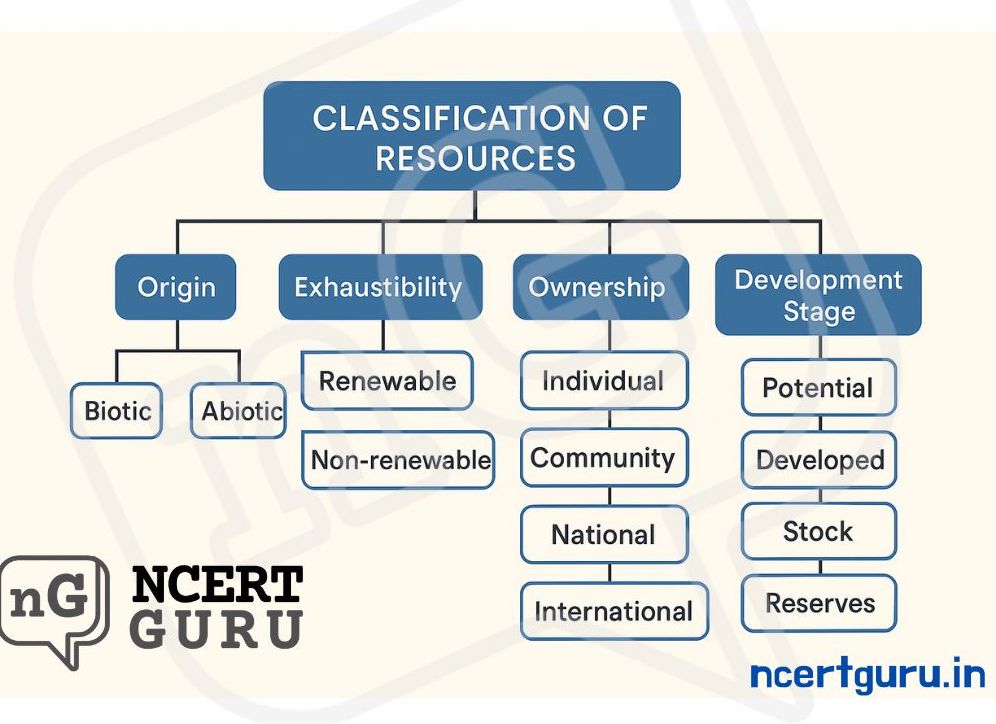Resources are the backbone of human development. But how do we organize and understand the vast variety of resources around us? That’s where the Classification of Resources becomes important. In this guide, we’ll explore the different types of resources, the basis of classification of resources, and why classification of natural resources matters for sustainable development.
Understanding Classification of Resources
The classification of resources helps us manage and use them wisely. Resources are not just free gifts of nature; human skills, technology, and cultural factors transform them into usable forms. To make resource management easier, scientists and geographers divide resources based on several criteria.
Let’s dive into the basis of classification of resources:

📌Classification of Resources by Origin
- Biotic Resources: These are resources obtained from the biosphere, such as plants, animals, and forests. They are living resources.
- Abiotic Resources: These are non-living resources like minerals, water, and air.
This classification of natural resources based on origin helps in understanding how life interacts with the environment.
📌Classification of Resources by Exhaustibility
- Renewable Resources: These can be replenished naturally over time, such as sunlight, wind, and biomass.
- Non-renewable Resources: These exist in finite quantities and once exhausted cannot be replenished quickly. Examples include fossil fuels like coal and petroleum.
This classification of resource by exhaustibility is critical for planning long-term sustainability.
📌Classification of Resources by Ownership
- Individual Resources: Owned privately by individuals, like land or houses.
- Community Resources: Resources accessible to all community members, like village ponds or public parks.
- National Resources: Resources owned by the government, like forests, minerals, and rivers within a nation’s territory.
- International Resources: Resources that are regulated by international organizations, such as oceanic resources beyond national jurisdiction.
Understanding ownership through the classification of resources helps to resolve disputes and encourages fair usage.
📌Classification of Resources by Development Stage
- Potential Resources: Resources found in a region but not yet utilized, such as solar energy in deserts.
- Developed Resources: Resources that are surveyed and used with the help of technology.
- Stock: Materials available in the environment but lacking current technology to access them (e.g., hydrogen as fuel).
- Reserves: A part of the stock that we know how to use with existing technology and is reserved for future use.
This aspect of resources classification is essential for balancing present and future needs.
Knowing the basis of classification of resources ensures that we make sustainable choices today, preserving the planet for generations to come.
See more:
Resources and Development:Class 10 Geography Chapter 1
